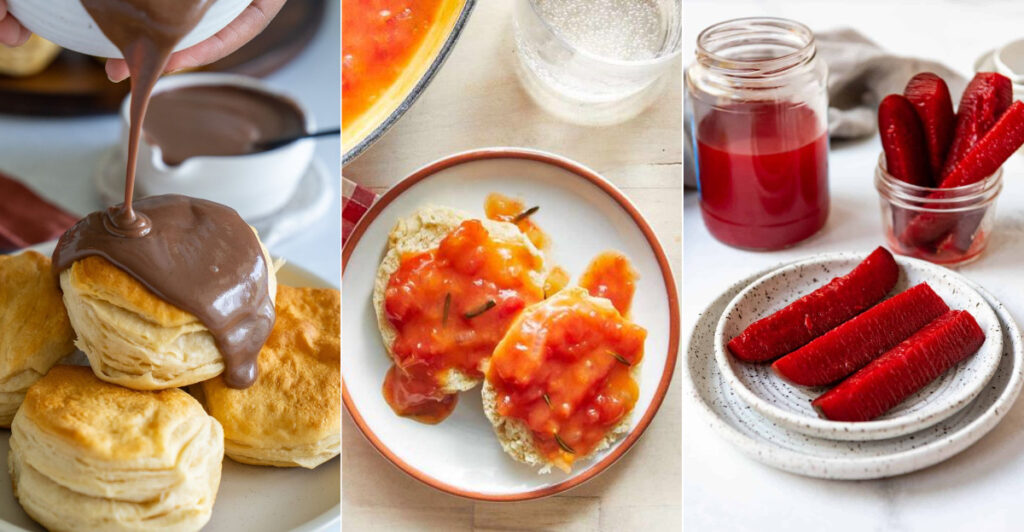Southern cuisine has a way of making outsiders scratch their heads in bewilderment. From pickles soaked in Kool-Aid to gravy made with chocolate, the South serves up dishes that sound completely made-up to anyone north of the Mason-Dixon line. Many visitors find themselves staring at menu items wondering if someone’s playing an elaborate prank on them.
1. Grits
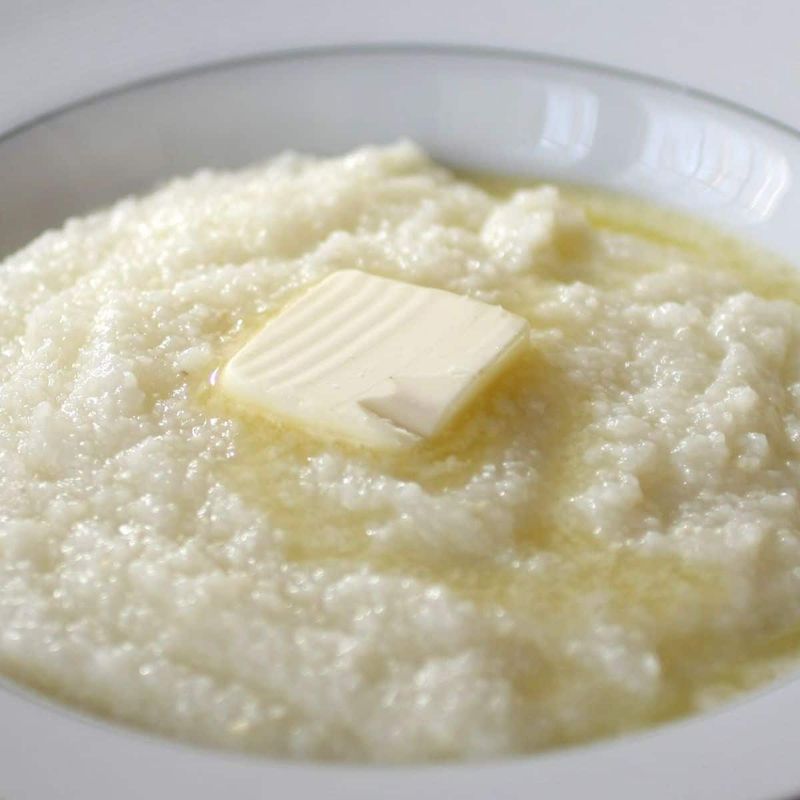
White, creamy, and completely mystifying to newcomers, grits spark more confusion than any other Southern breakfast staple. Yankees often mistake this ground corn porridge for cream of wheat or assume it’s some kind of exotic rice dish.
The real bewilderment comes when Southerners get passionate about proper grits preparation. Instant versus stone-ground becomes a heated debate that leaves outsiders wondering why anyone cares so deeply about what looks like wallpaper paste.
Butter, cheese, shrimp, or sugar – the topping arguments create even more confusion among those trying to understand this mysterious Southern comfort food.
2. Boiled Peanuts
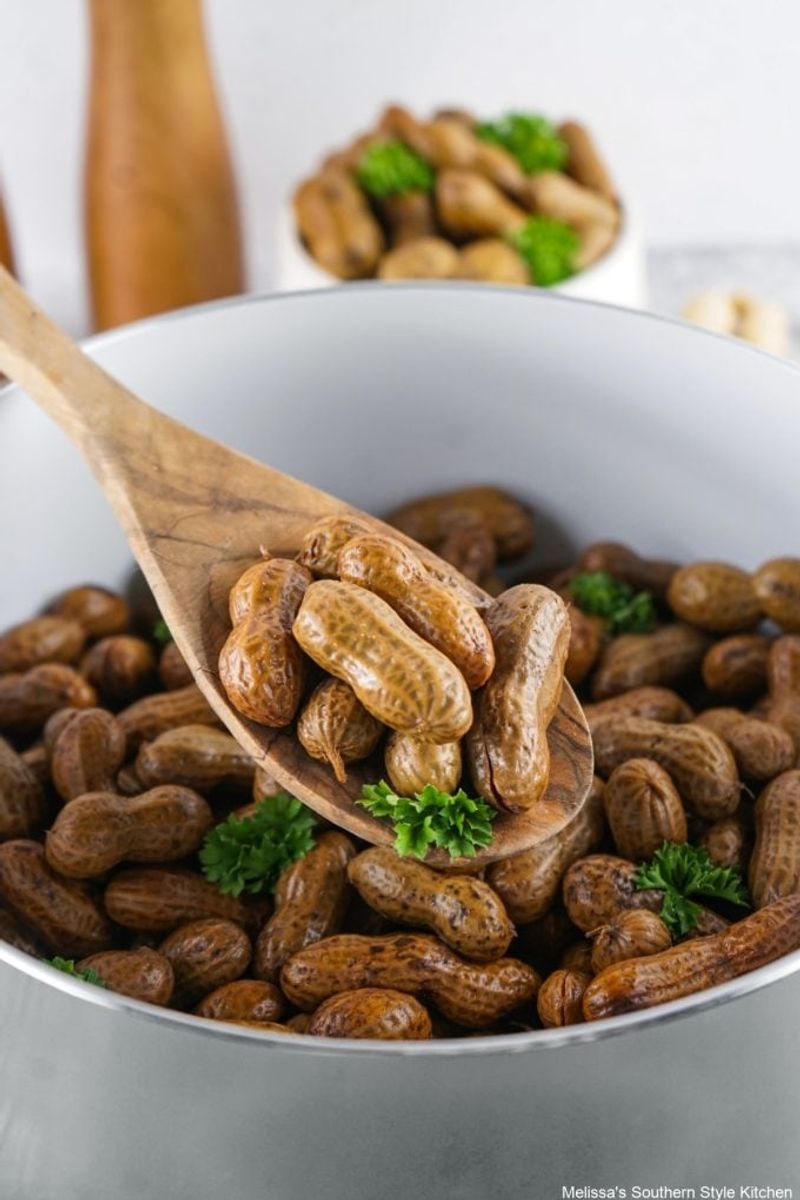
Roadside stands across the South sell these soggy, salty legumes that completely baffle anyone expecting the familiar crunch of roasted peanuts. The first bite delivers a mushy texture that makes newcomers question everything they thought they knew about peanuts.
Southerners slurp the brine and toss shells everywhere while explaining this is “real” peanut eating. Meanwhile, confused visitors wonder why anyone would intentionally make peanuts soft and squishy.
The cultural divide becomes clear when Southerners get nostalgic about childhood memories of boiled peanut road trips, while others can’t understand the appeal of wet nuts.
3. Chitterlings (Chitlins)
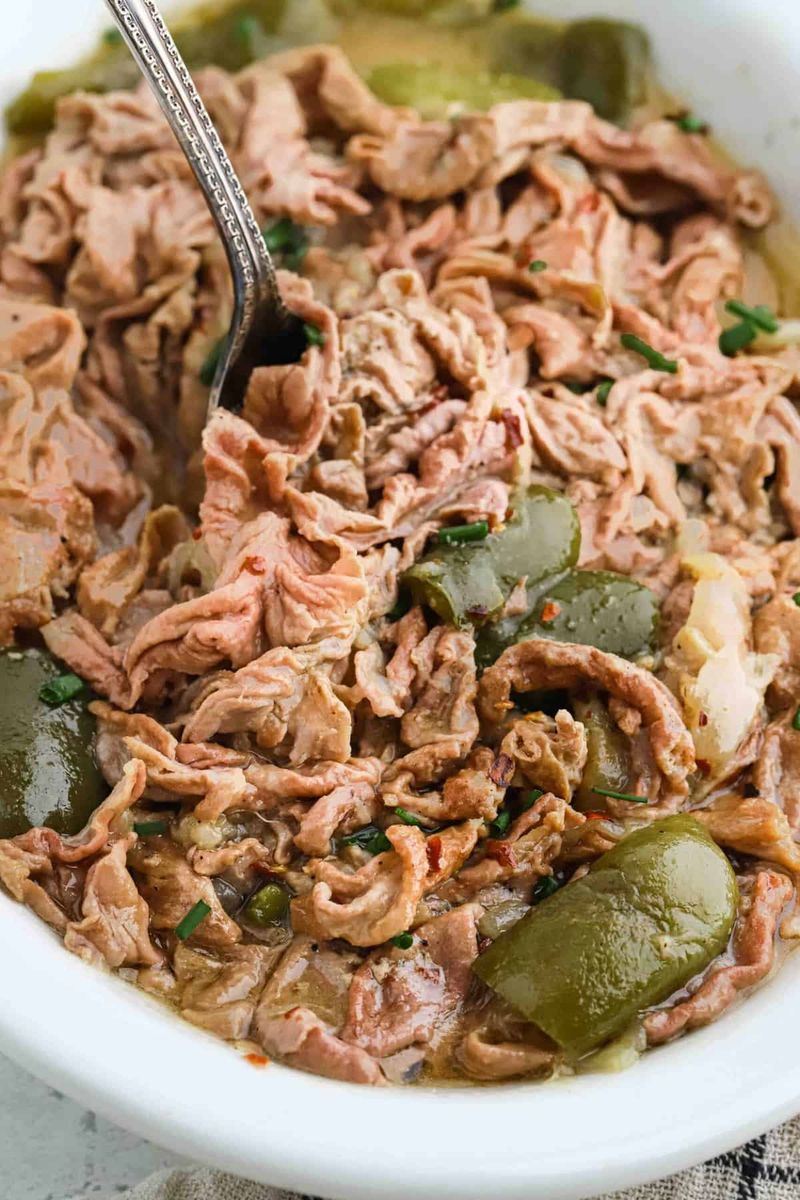
Nothing creates more confusion and horror than explaining chitlins are cleaned pig intestines served as a beloved delicacy. The mere mention of the main ingredient sends non-Southerners running for the nearest exit.
Family gatherings feature heated discussions about proper cleaning techniques and cooking methods, while confused outsiders wonder how intestines became party food. The smell during preparation adds another layer of bewilderment to the entire experience.
Southerners defend this soul food tradition with fierce pride, explaining the historical significance while others remain completely baffled by the concept of eating organ meat voluntarily.
4. Tomato Gravy
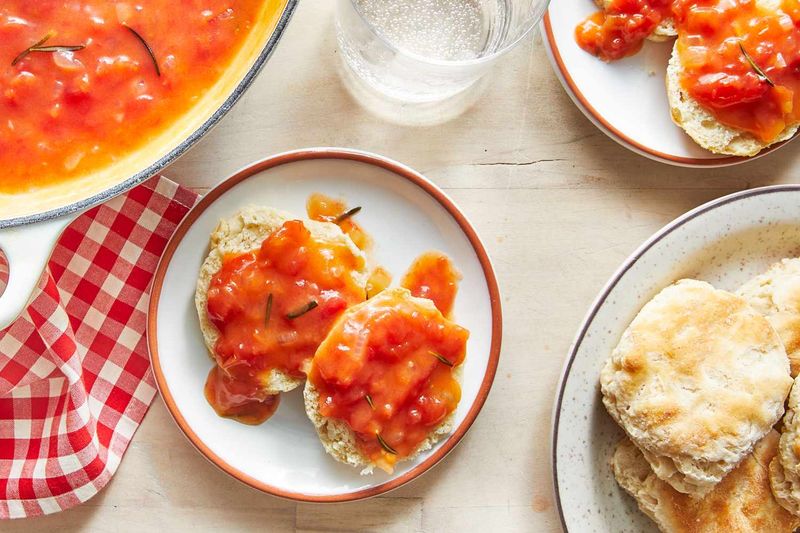
Bacon grease, flour, and tomatoes create this mysterious red gravy that sends Italian-Americans into complete confusion. It’s not marinara sauce, despite appearances, and definitely not what anyone expects when they hear “tomato” and “gravy” together.
Served over biscuits for breakfast, this concoction challenges everything outsiders think they know about morning meals. The combination sounds like someone mixed up lunch and breakfast recipes by accident.
Southern grandmothers swear by family recipes while confused visitors try to understand why anyone would put tomatoes in gravy when perfectly good sausage gravy exists.
5. Livermush
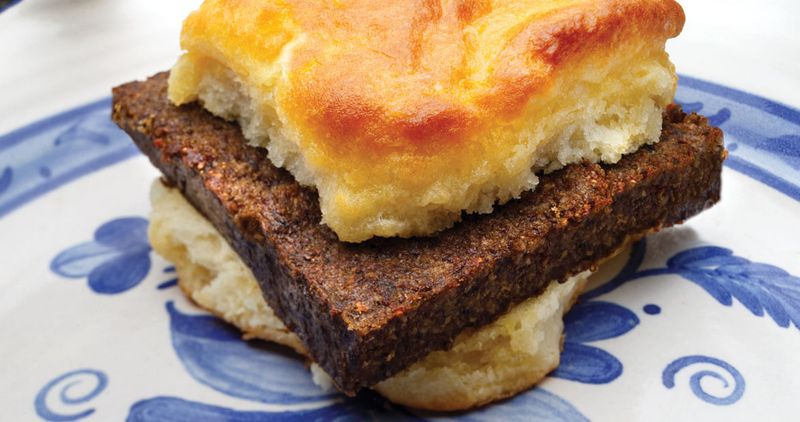
North Carolina’s mystery meat loaf combines pig liver, head parts, and cornmeal into something that sounds like a dare rather than breakfast. The name alone creates enough confusion to clear a room of squeamish eaters.
Sliced and fried until crispy, livermush develops a cult following among locals who grew up eating it. Meanwhile, outsiders can’t get past the ingredient list long enough to try a bite.
Gas stations sell it alongside normal breakfast items, creating a surreal shopping experience for confused travelers wondering if they’re being pranked by an entire state’s convenience stores.
6. Hoppin’ John
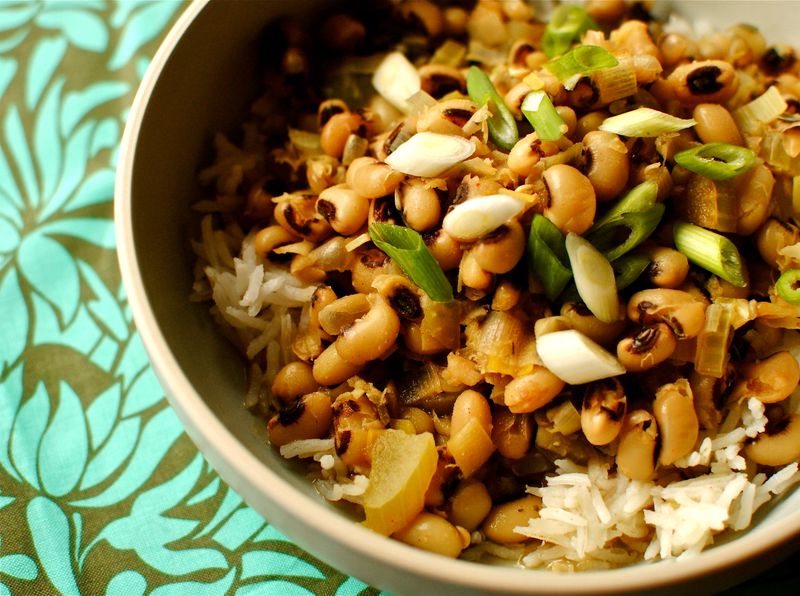
Black-eyed peas, rice, and pork create this New Year’s luck-bringing dish that leaves non-Southerners wondering about the strange name and stranger tradition. The combination sounds random to anyone unfamiliar with Southern superstitions.
Families serve it religiously on January first while explaining complex luck theories to confused guests. The idea that specific foods guarantee prosperity seems completely foreign to logical-minded visitors.
Arguments about proper recipes and lucky variations add another layer of confusion to an already mysterious dish that somehow became essential for Southern New Year celebrations.
7. Cornbread Salad
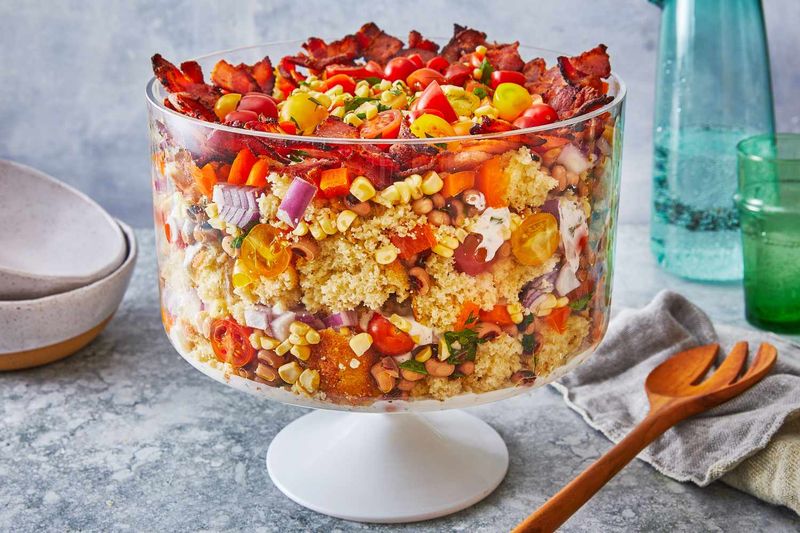
Layers of crumbled cornbread mixed with beans, vegetables, and mayonnaise create this potluck phenomenon that challenges every definition of “salad” known to mankind. The concept confuses anyone who thinks salads should be healthy.
Church gatherings and family reunions feature multiple versions while confused newcomers try to understand how bread became a salad ingredient. The mayonnaise-heavy dressing adds another layer of bewilderment.
Southerners defend this creation passionately while others wonder if someone misunderstood the assignment when asked to bring salad to dinner.
8. Koolickles
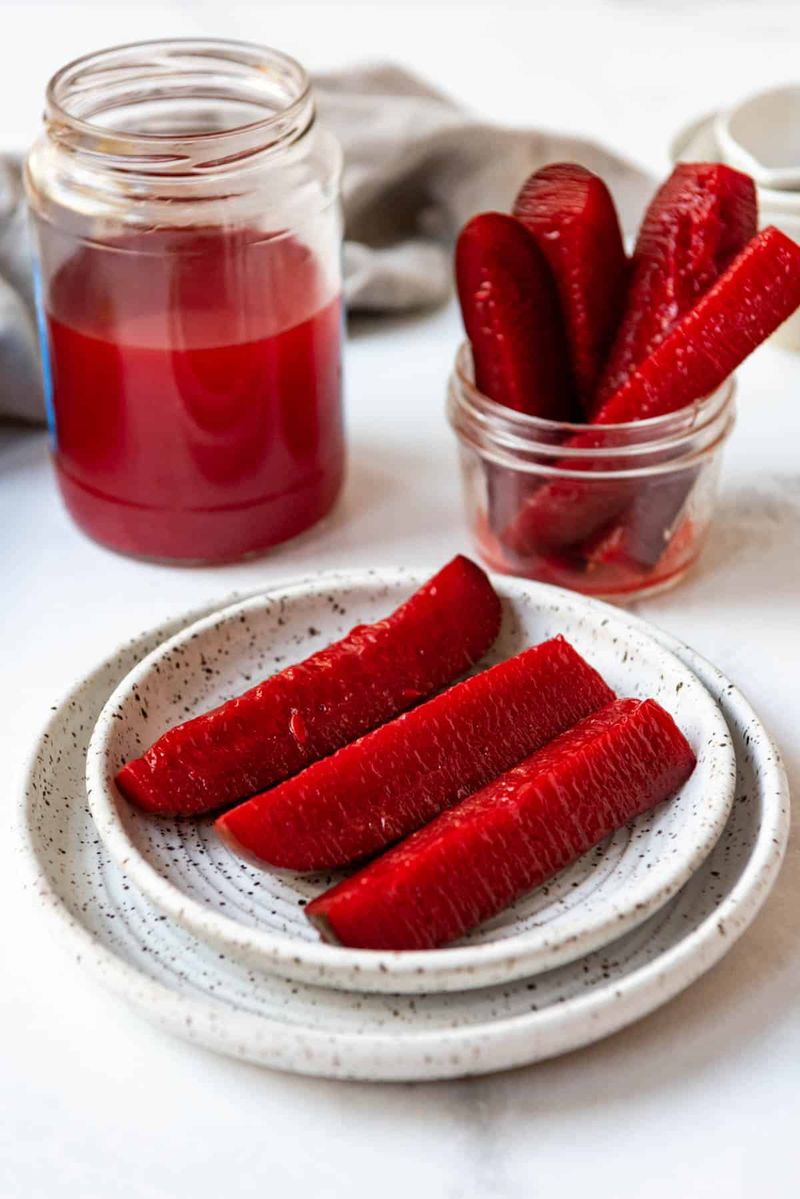
Mississippi Delta innovation combines dill pickles with grape or cherry Kool-Aid, creating a snack that sounds like a child’s science experiment gone wrong. The bright purple or red color adds visual confusion to the taste bewilderment.
Gas stations sell these neon-colored pickles to locals who grew up eating them, while confused travelers assume they’re looking at spoiled food. The sweet-sour combination defies all snack logic.
Explaining the preparation process to outsiders – soaking pickles in sugary drink mix – only increases their confusion about Southern snack creativity and questionable food choices.
9. Frogmore Stew (Lowcountry Boil)
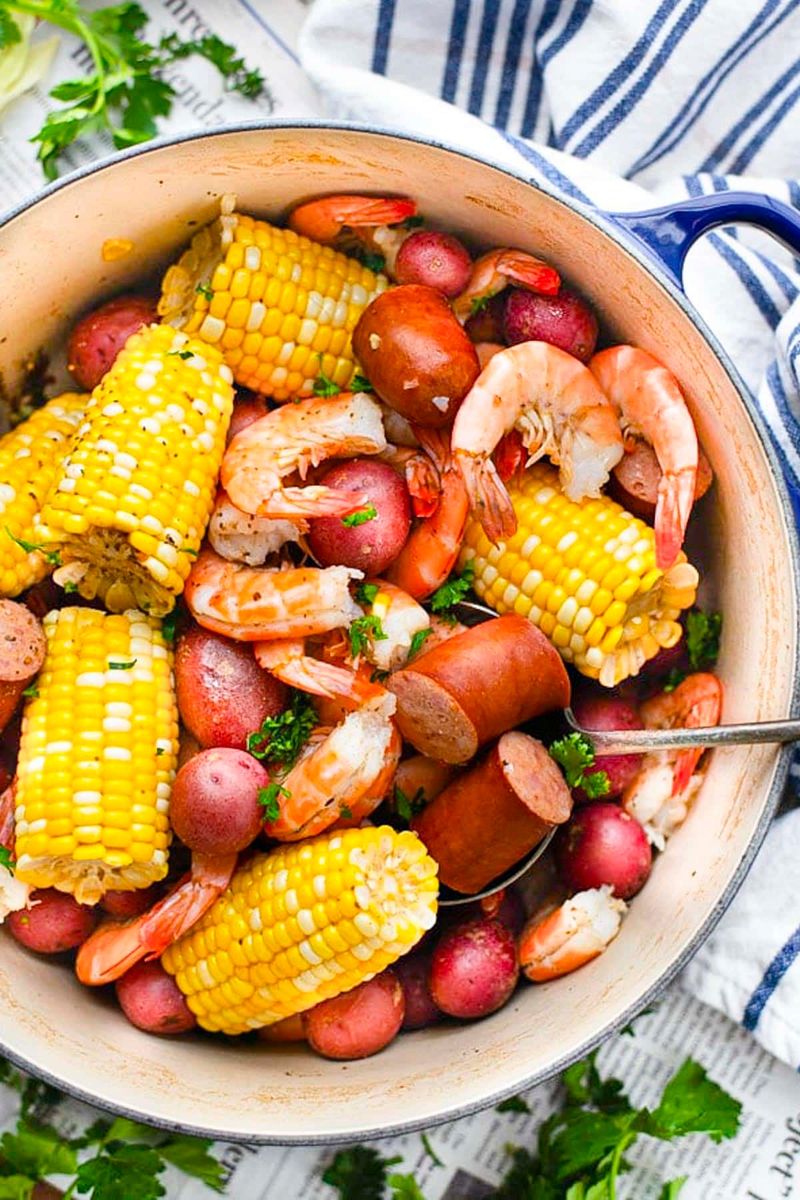
Despite its amphibian-suggesting name, this seafood boil contains zero frogs, immediately confusing anyone who takes the title literally. Shrimp, corn, sausage, and potatoes create a messy feast that requires newspaper table coverings.
The communal eating style bewilders formal diners who expect individual plates and proper utensils. Instead, everyone digs in with their hands while shells fly everywhere.
Lowcountry natives explain the frog-free name origin while confused visitors wonder why Southerners can’t just call food what it actually contains instead of creating misleading titles.
10. Scrapple
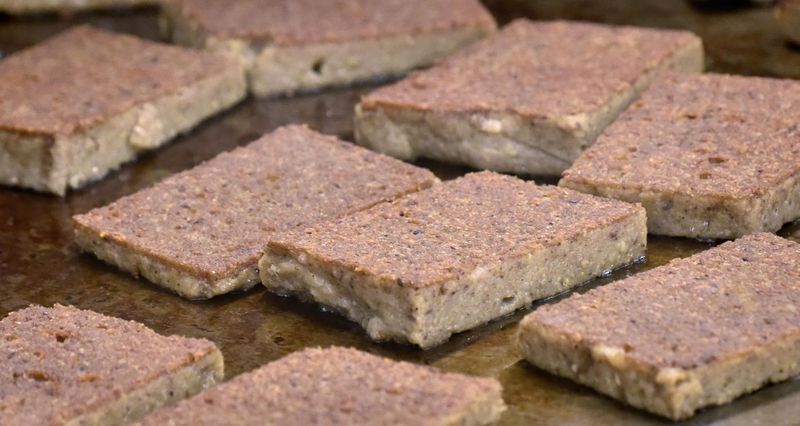
Pork scraps mixed with cornmeal and formed into a mysterious loaf that gets sliced and fried creates confusion about what exactly constitutes “meat.” The ingredient list sounds like someone cleaned out the butcher shop floor.
Mid-Atlantic and Southern breakfast tables feature this crispy-outside, mushy-inside creation while confused diners try to identify the various meat bits. The texture adds another layer of bewilderment.
Locals explain it’s “using everything but the squeal” while others wonder why anyone would voluntarily eat something called “scrapple” that looks like compressed mystery meat.
11. Tomato Pie

Savory pies filled with tomatoes, mayonnaise, and cheese confuse anyone expecting sweet fruit filling when they hear “pie.” The concept challenges every dessert assumption held by non-Southerners.
Summer gatherings feature these mayonnaise-heavy creations while confused guests wonder if someone mixed up the recipe categories. The thick layer of mayo-cheese topping adds visual bewilderment.
Explaining that not all pies are sweet desserts becomes a cultural education session for visitors who can’t understand why Southerners put vegetables in pie crusts.
12. Chicken & Waffles
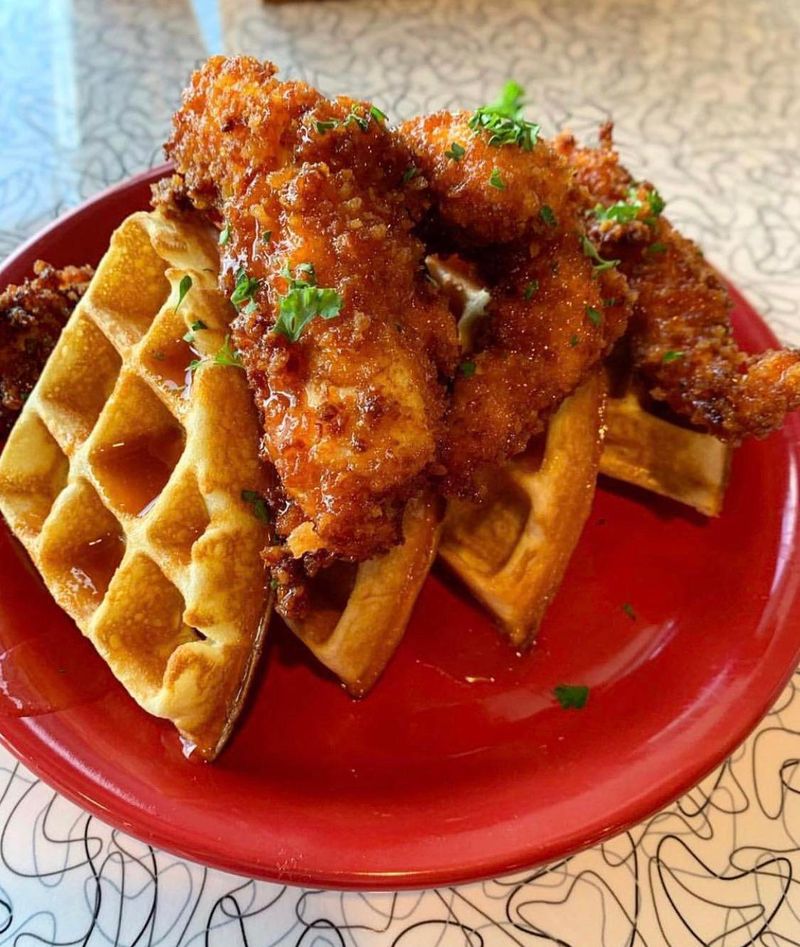
Sweet breakfast waffles topped with fried chicken create a combination that confuses anyone who thinks these foods belong at different meals. The concept of mixing syrup with savory chicken baffles logical eaters.
Soul food restaurants serve this any time of day while confused diners try to figure out the proper eating technique. Fork and knife versus hands becomes another decision point.
The sweet-and-salty combination has deep Southern roots, but explaining why chicken belongs on waffles to confused outsiders requires a history lesson about jazz-age dining and cultural fusion.
13. Banana Pudding (The Southern Way)
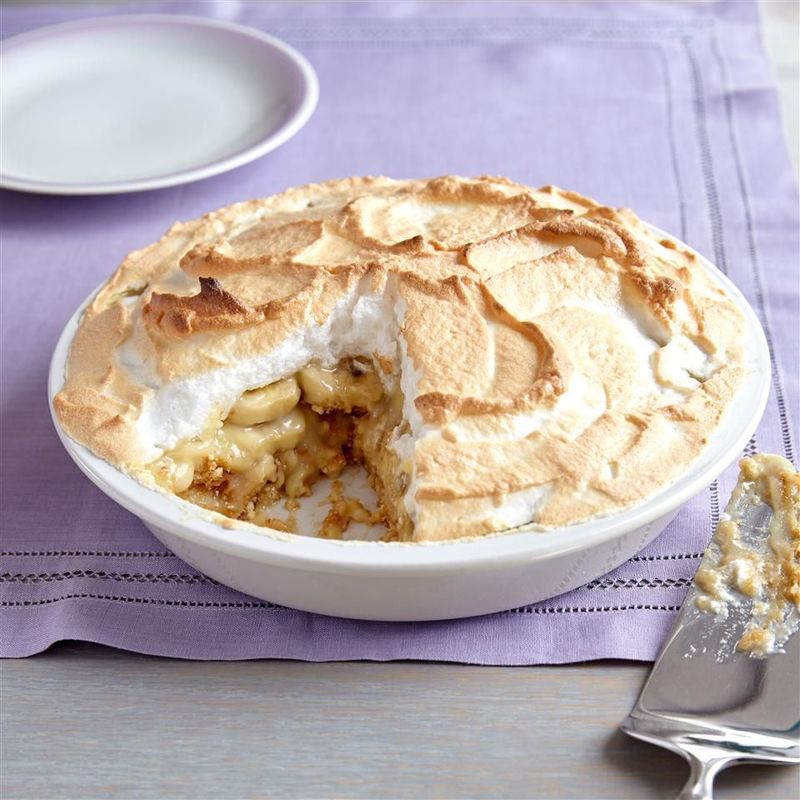
Real banana pudding requires vanilla wafers, homemade custard, and fresh bananas – not the instant pudding mix that confuses Southerners when served elsewhere. The meringue topping adds another authenticity requirement.
Family recipes become closely guarded secrets while confused visitors wonder why pudding preparation sparks such passionate debates. The labor-intensive process seems excessive for simple dessert.
Church potlucks feature multiple versions, creating confusion about which grandmother makes it “right” while outsiders can’t taste the difference between homemade and instant varieties.
14. Sweet Tea

Southern sweet tea contains enough sugar to qualify as syrup, shocking unsuspecting visitors who expect normal iced tea. The sweetness level borders on candy, creating instant confusion about regional taste preferences.
Restaurants automatically serve sweet tea unless specifically requested otherwise, confusing newcomers who assume “tea” means unsweetened. The sugar dissolving process requires hot tea, adding preparation complexity.
Southerners drink this liquid sugar by the gallon while confused health-conscious visitors wonder how anyone consumes that much sweetness and calls it a beverage.
15. Biscuits & Chocolate Gravy
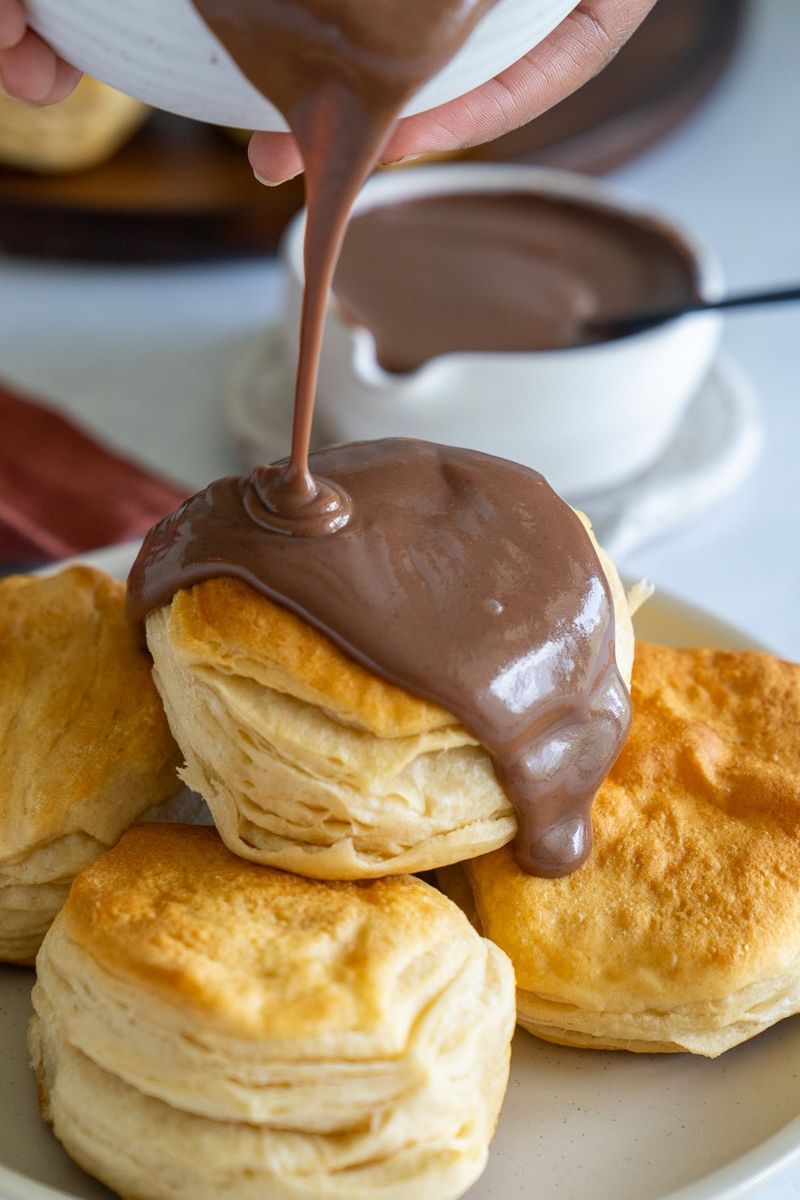
Appalachian breakfast tradition combines fluffy biscuits with sweet chocolate gravy, confusing anyone who thinks gravy should be savory. The cocoa-based sauce looks like chocolate milk but gets poured over bread.
Mountain families serve this sugar-heavy breakfast while confused lowland visitors try to understand why chocolate became gravy. The preparation involves cocoa powder, sugar, and milk in proportions that seem more like dessert.
Explaining this regional specialty to outsiders requires cultural context about mountain cooking and making do with available ingredients when fresh fruit wasn’t accessible.
16. Fried Okra
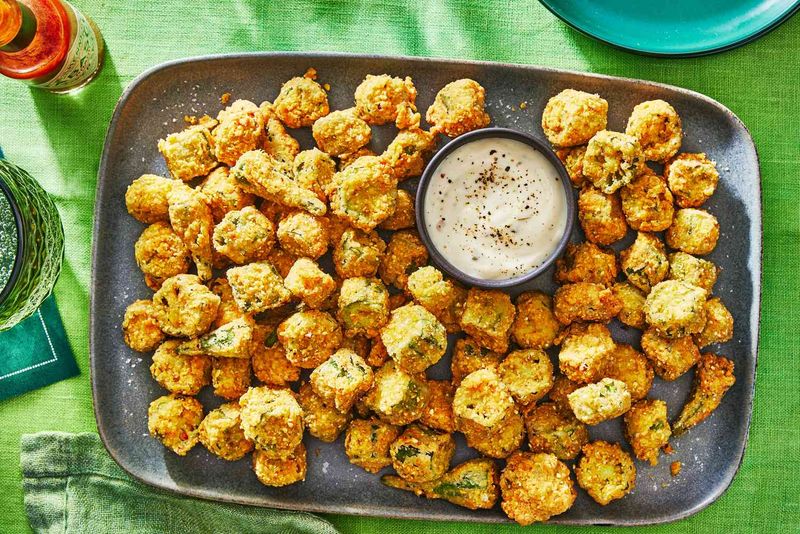
Slimy when boiled but crispy when fried, okra creates confusion among newcomers who can’t get past the texture issues. The vegetable’s mucilaginous properties make it a love-it-or-hate-it Southern staple.
Cornmeal coating transforms the slimy pods into crunchy delights while confused diners wonder why anyone would eat something naturally gooey. The preparation method makes all the difference.
Southern gardens grow okra religiously while confused Northern visitors can’t understand the appeal of a vegetable that seems designed to gross people out in its natural state.
17. Coca-Cola Cake
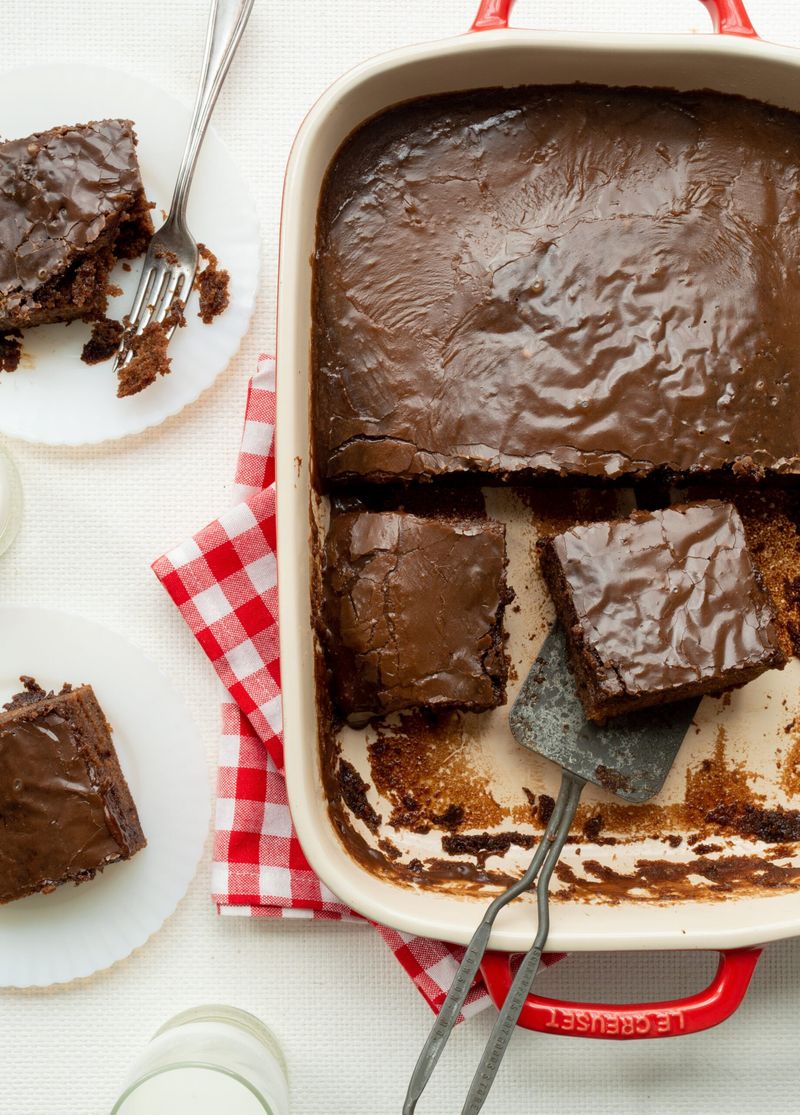
Chocolate cake made with actual Coca-Cola in both batter and frosting confuses bakers who can’t understand why anyone would put soda in dessert. The concept sounds like a marketing gimmick gone too far.
Southern bakeries feature this moist creation while confused customers wonder if someone spilled Coke in the cake mix by accident. The cola adds unexpected depth to chocolate flavor.
Recipe explanations about using soda for moisture and flavor enhancement only increase confusion among traditional bakers who stick to conventional ingredients for their chocolate cakes.
18. Chow-Chow
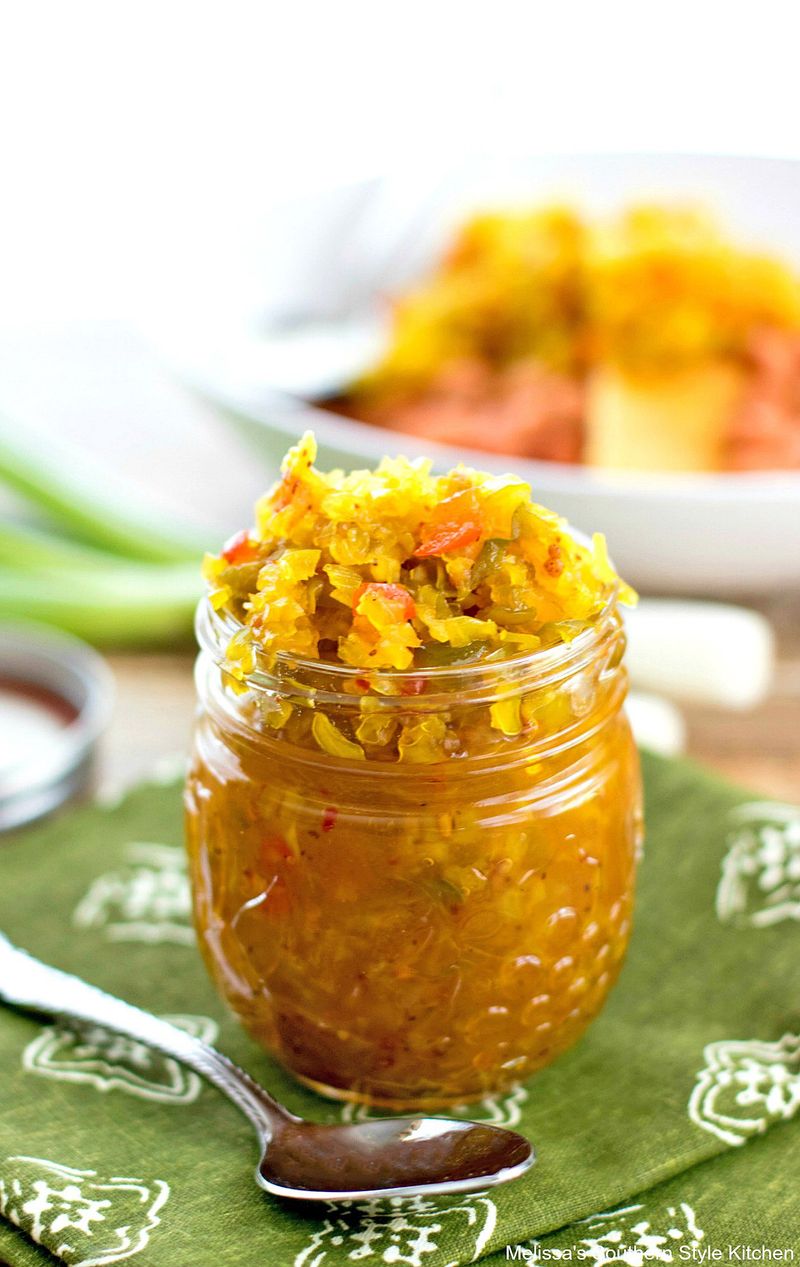
Tangy relish made from green tomatoes, cabbage, and peppers creates confusion about pronunciation and purpose. The name sounds like dog food to unfamiliar ears, adding another layer of bewilderment.
Canning season produces jars of this pickled mixture while confused newcomers wonder why anyone preserves unripe tomatoes. The chunky texture and vinegar bite challenge conventional relish expectations.
Serving suggestions with beans and hot dogs seem random to outsiders who can’t understand why this particular vegetable combination became a condiment worthy of preservation and proud family recipes.
19. Pickled Pig’s Feet
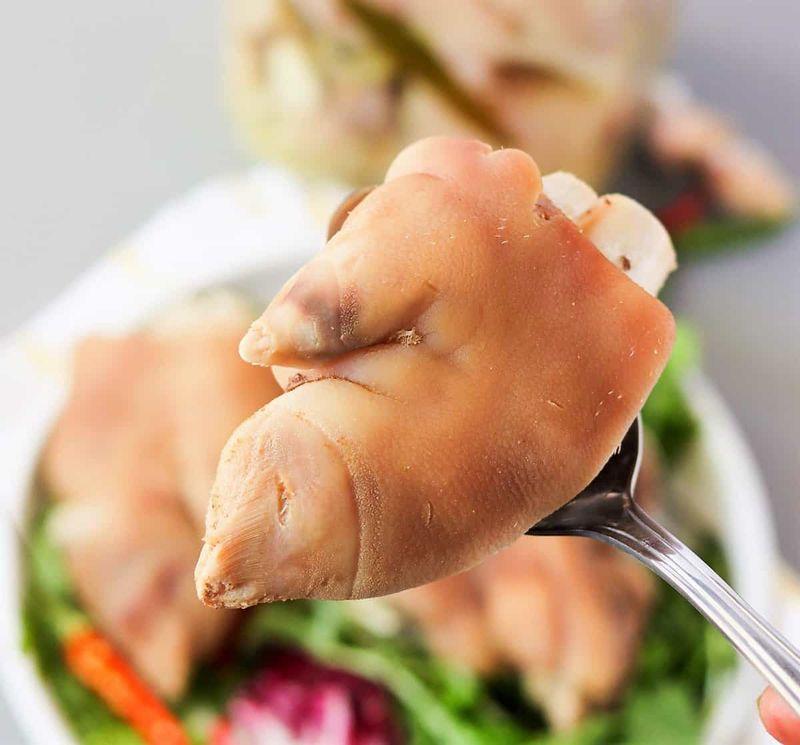
Jarred pig trotters floating in brine create instant confusion and revulsion among squeamish eaters who can’t believe this counts as snack food. Gas station displays feature these alongside normal chips and candy.
Bar patrons munch on these gelatinous treats while confused visitors wonder how feet became acceptable finger food. The appearance alone challenges most people’s comfort zones.
Explaining the cultural significance and preparation process to horrified outsiders becomes an exercise in cultural anthropology about using every part of the animal and traditional preservation methods.
20. MoonPies & RC Cola
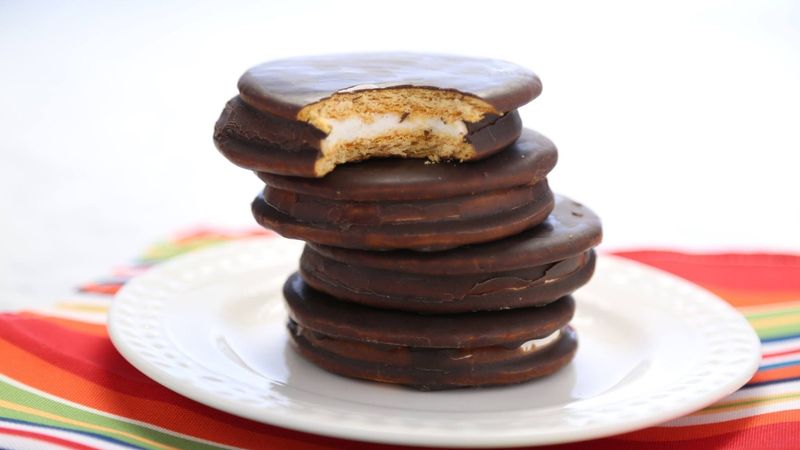
This classic Appalachian combination pairs marshmallow-filled cookies with regional cola, creating confusion about why these specific brands became culturally linked. The pairing seems random to outsiders.
Mountain communities treat this duo as the ultimate snack combination while confused visitors wonder why not Coke and Oreos instead. The regional brand loyalty runs deeper than simple taste preferences.
Explaining the historical connection between working-class communities, affordable treats, and local brand availability becomes a lesson in Southern economics and cultural identity formation through food choices.

